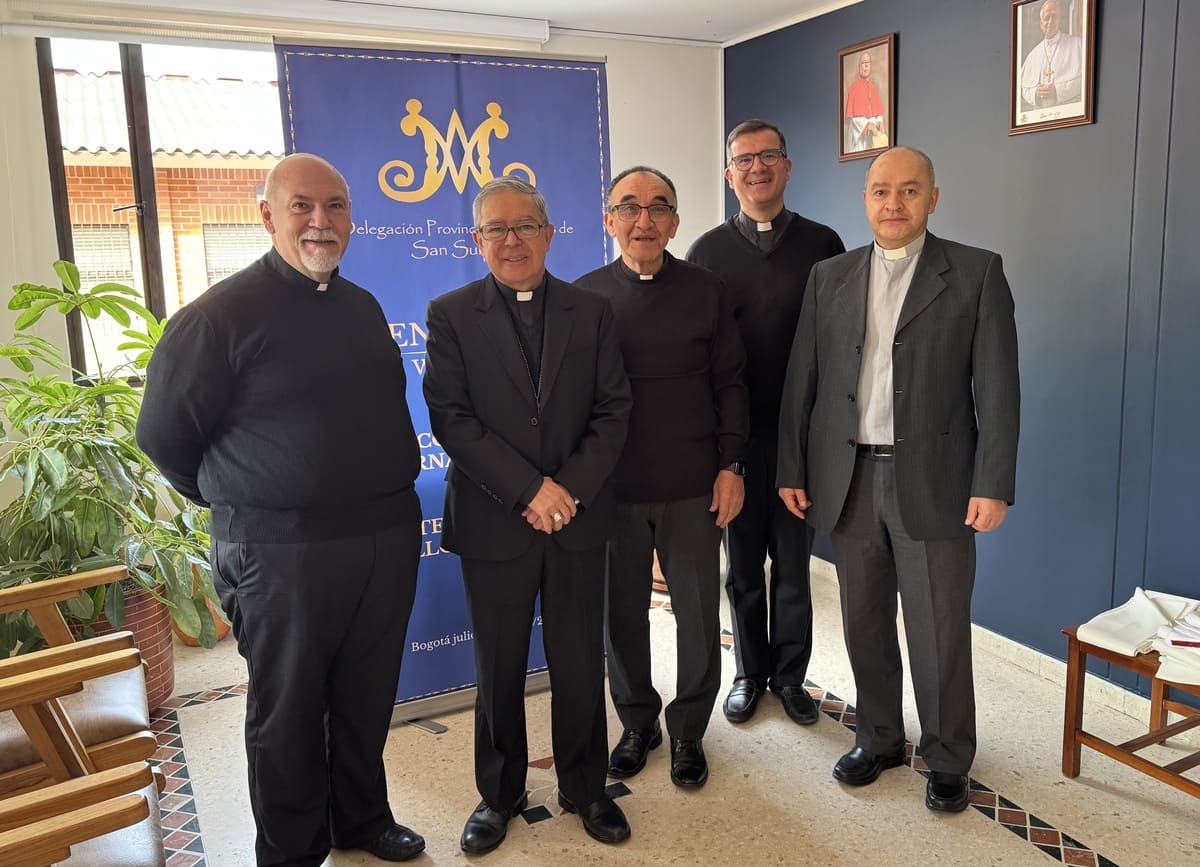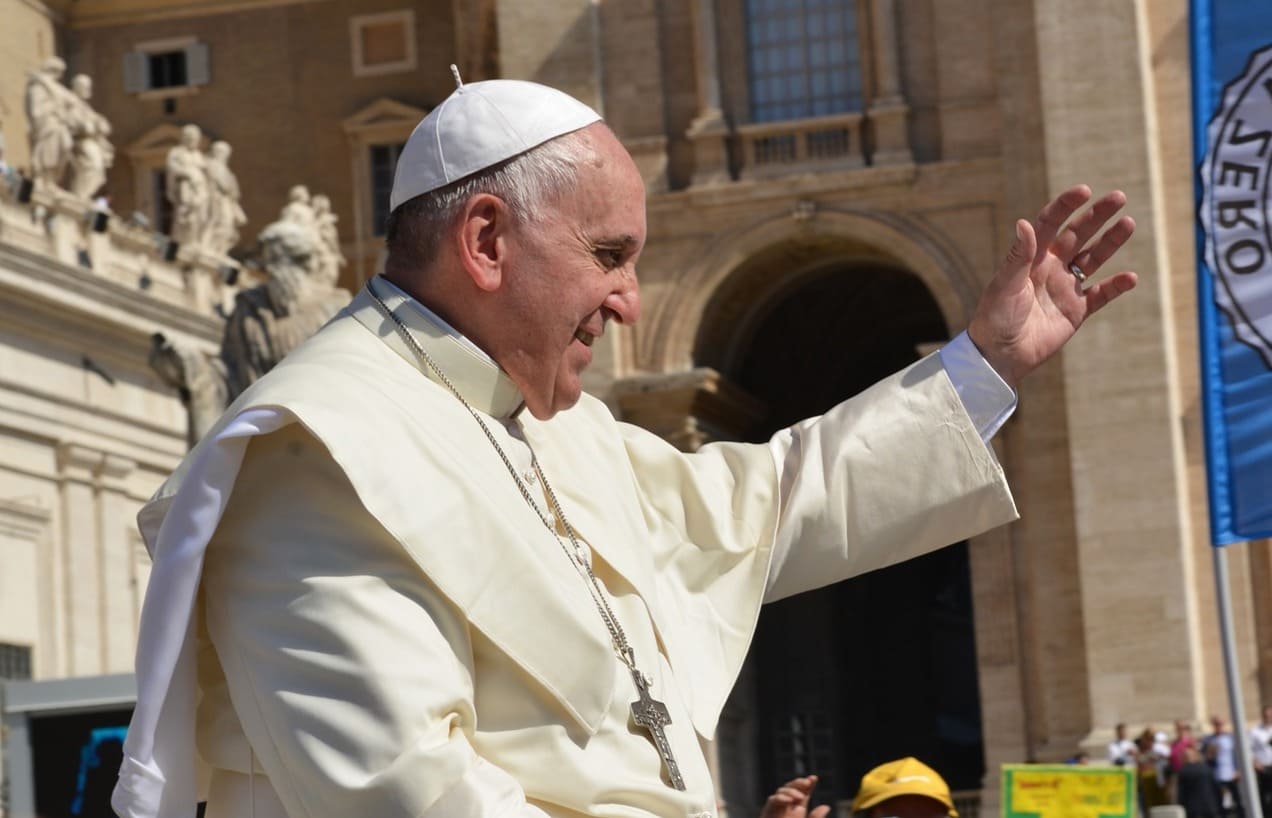Pope Benedict XVI’s announcement on the Feast of the Epiphany of an upcoming consistory to create twenty-two new cardinals provides a convenient backdrop for some Sulpician history.
Throughout its 370 years of existence, some people have remarked that the Society of Saint Sulpice’s influence historically has extended beyond what our small size might imply. This is largely due to our specific ministry of initial and ongoing formation of priests.
Normally, the Society eschews the acceptance of ecclesiastical honors. Our founder, Father Jean-Jacques OLIER himself, refused to be named a bishop several times. Yet in Sulpician history numerous confreres have been named bishops by the Holy See. Some of them were founders of dioceses and became quite influential in the Church. Though it was never expected than any Sulpician would become a cardinal - a prince of the Church - five Sulpicians, in fact, have been so honored. We will take a closer look at these five figures in chronological order.
- Jean VERDIER (1864-1940)
- André Damien Ferdinand JULLIEN (1882-1964)
- Paul-Émile LÉGER (1904-1991)
- Édouard GAGNON (1918-2007)
- Marc OUELLET (1944-present)
The first Sulpician Cardinal was Jean VERDIER, born on 19 February 1864 in Lacroix-Barrez in the Diocese of Rodez in central France. In the seminary he was recognized as a serious and intelligent student, who gave consideration to joining any one of several religious communities. However, he decided to join the Society of Saint Sulpice and was admitted in 1898.
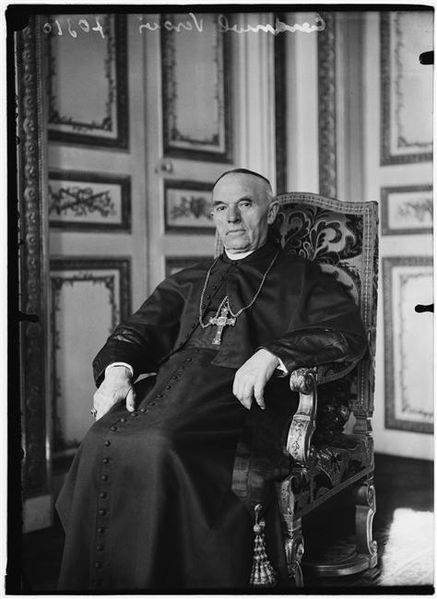 Cardinal Verdier
Cardinal VerdierIn 1887 he was ordained a priest at Saint John Lateran in Rome where he also did studies in theology and canon law. He held various posts for the Society, notably as Superior of the Séminaire des Carmes from 1912-1922. While in Paris he became an important figure in the diocese, working closely with two successive bishops, Cardinal Amette and Cardinal Dubois. He also was elected to the General Council of the Society and worked closely with the Superior General of the Society, Father Henri GARRIGUET, succeeding him as Superior General after the former’s death in 1929.
In that era, one should remember, the Superior General of Saint Sulpice was simultaneously Superior of the Sulpician Seminary at Issy-les-Moulineaux and Vicar General for the Diocese of Paris. So it is no surprise that a capable man like Verdier became closely connected to the day-to-day functioning of the diocese.
On 18 November 1929, His Holiness Pope Pius XI named Verdier Archbishop of Paris. Five days later, he was named a Cardinal. Since he was still Superior General of the Society, Verdier named a Sulpician Vice Superior General, Pierre BOISARD, to handle the day-to-day affairs of the Society so he could devote his energies to larger questions. Boisard would himself become Superior General from 1945 to 1952 and go on to write an important history of the Superiors General of the Society.
As Archbishop, Cardinal Verdier provided vigorous leadership, supporting and redirecting Catholic Action and establishing organizations to work with youth. In 1938, following the horrors of “Kristallnacht” in Germany, Verdier spoke out forcefully against the deplorable violence of the Nazis.
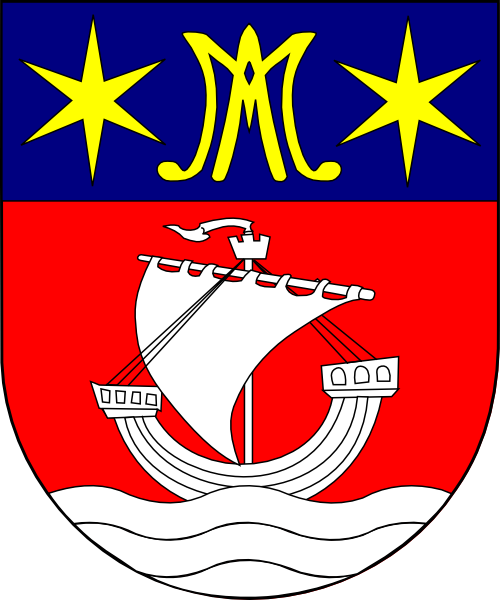 Verdier’s Coat of Arms
Verdier’s Coat of ArmsCardinal Verdier died in Paris on 9 April 1940 and is buried in the Cathedral of Notre Dame, where his memorial plaque can be viewed on the right wall behind the apse.
The second Sulpician to become a cardinal was André Damien Ferdinand JULLIEN (1882-1964). He spent most of his Sulpician ministry in Rome.
Born on 25 October 1882 in Pelussin in the Diocese of Lyon, he studied at the Sulpician seminary in Paris and joined the Society. Ordained a priest in 1905 for the Diocese of Paris, he went to Rome for his doctorate in canon law. After completing his Solitude year of formation as a Sulpician in 1912, he was sent to Rome to work as a canonist in the Sacred Rota. There he helped in the preparation of the new Code of Canon Law (1917).
In 1922, he became auditor of the Roman Rota, and worked loyally and quietly for many years in that dicastery. In 1944 he became the Dean of the Rota. On 15 December 1958 Pope John XXIII created Father Jullien a cardinal, but he was not ordained a bishop until 19 April 1962. Unfortunately, he developed leukemia and became seriously ill. Although he participated in the first two sessions of Vatican Council II (1962-1965), where he made some contributions to the formation of the Constitution on the Liturgy, he was not very active because of the state of his health. He also participated in the conclave of 1963 that elected Pope Paul VI. He died 11 January 1964 and was buried in the Church of Saint Giorgio in Velabro in Rome.
The next three Sulpician Cardinals all hail from Canada, “New France.” First among them is Paul-Émile LÉGER (1904-1991), who had an illustrious history as a bishop in Canada and then, after his retirement, went off to Africa to work in a leprosarium for a time.
Born 16 April 1904 in Valleyfield (Québec), he studied theology at the Sulpician seminary in Montreal and was ordained a priest on 25 May 1929. He then went to Paris to work at the Sulpician seminary in Issy-les-Moulineaux and also to obtain a doctorate in canon law at L’Institut Catholique (1931).
Léger was named Vicar General of the Diocese of Valleyfield in 1940, and subsequently resigned from the Society for a time to fulfill those duties, returning to the Society in 1947 to become Rector of the Pontifical Canadian College in Rome.
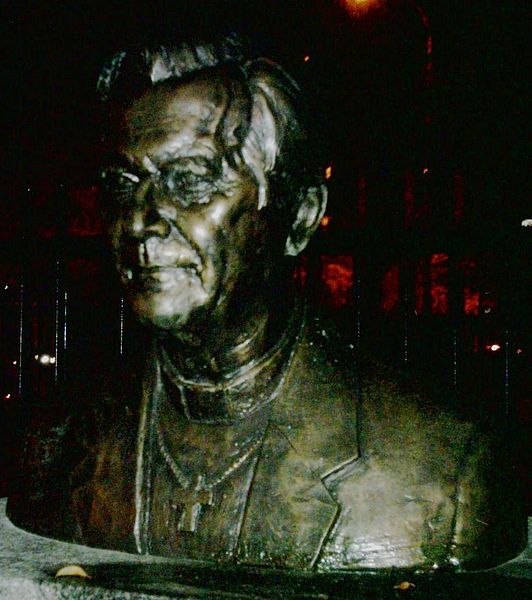 Bronze Bust of Cardinal Léger
Bronze Bust of Cardinal Léger
On 25 March 1950 Pope Pius XII named Léger Archbishop of Montreal He was created a cardinal on 12 January 1953. Léger was particularly active during the Second Vatican Council, where he spoke out strongly on questions of religious liberty, birth control, and marriage and the family. Although he was by nature somewhat stern and formal, he was strongly influenced by the reforms of the Council. He resigned as Archbishop in 1968 to go to Africa and work as a missionary in Cameroun. He stayed there 10 years, returning to Montreal to continue an active ministry in retirement. He died there in 1991, the last cardinal created by Pope Pius XII.
The fourth Sulpician cardinal is Édouard GAGNON (1918-2007), who came from a family of thirteen children in the small town of Port-Daniel (Québec). He did his priestly formation under the Sulpicians in Montreal, being ordained and entering the Society on 15 August 1940. He then obtained a doctorate in canon law from the University of Laval (1944) and was assigned to teach canon law and moral theology in Sulpician seminaries in Canada and South America. He also served as a peritus during the third and fourth sessions of the Second Vatican Council (1964-1965).
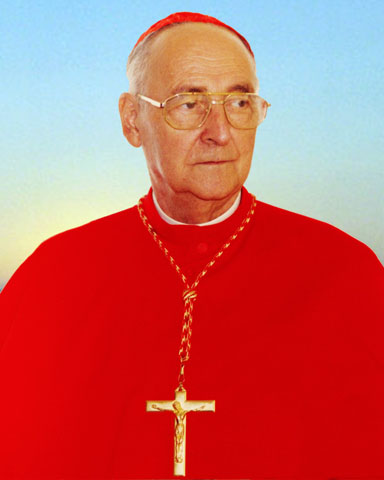 Cardinal Gagnon
Cardinal GagnonIn 1966 Gagnon became Secretary of the Pontifical Council for Social Communications in Rome, and also was named Rector of the Canadian Pontifical College in 1969. In February 1969 he was named Bishop of St. Paul (Alberta). From 1974 to 1990, Gagnon went to Rome to work in several posts for the Holy See, most notably as President of the Pontifical Council for the Family and President of the Pontifical Council for the Eucharistic Congress. Pope John Paul II created Gagnon a cardinal on 25 May 1985, and also asked him to oversee conversations with the schismatic Fraternity of Saint Pius X founded by Archbishop Marcel Lefebvre.
Recognized as a holy person and rather warm and friendly, Cardinal Gagnon was also a staunch defender of pro-life issues and magisterial teaching on the family. Upon his retirement in 2000, Gagnon returned to Montreal to take up residence with the retired Sulpicians in the Vieux Séminaire. He died on 25 August 2007 and was buried in the Sulpician cemetery at Le Grand Séminaire in Montreal.
Finally, we arrive in the present. The most recent cardinal to come from the Society of Saint Sulpice is Marc OUELLET (b. 1944), now serving as Prefect of the Congregation for Bishops and President of the Pontifical Council for Latin America. A close confidant of Pope Benedict XVI, Cardinal Ouellet also has had an illustrious career as a Sulpician.
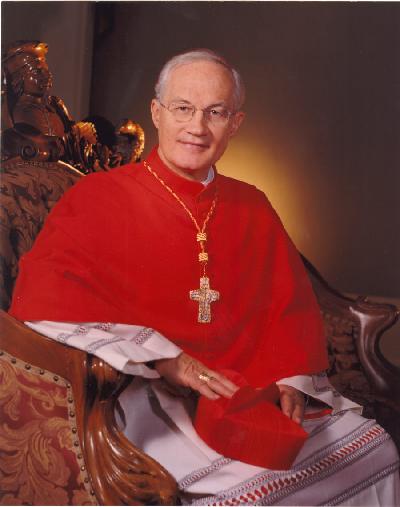 Cardinal Ouellet
Cardinal Ouellet
Born on 8 June 1944 in Lamotte (near Amos), Ouellet is one of eight children from a strong Catholic family. He studied theology at the Sulpician seminary in Montreal and was ordained a priest for the Diocese of Amos on 25 May 1968. He served as a curate in a parish for two years and then went to South America to teach, entering the Sulpicians in 1972. He studied philosophy at the University of Saint Thomas Aquinas in Rome from 1972-1974, and then returned to South America to teach in the Sulpician seminary in Manizales. The Sulpicians recalled him to Canada in 1976 to teach at Le Grand Séminaire in Montreal. He went on to doctoral studies in theology in Rome at the Gregorian University (1978-1982), and then returned to South America to teach and then become Rector of the seminary in Cali, Colombia. He also later served as Rector of Le Grand Séminaire in Montreal (1990-1994) and then the same post at St. Joseph’s Seminary (1994-1996) in Edmonton (Alberta).
In 1997 Ouellet returned to Rome to teach at the John Paul II Institute at the Pontifical Lateran University, and then was named by Pope John Paul II in 2001 a bishop and Secretary of the Pontifical Council for Promoting Christian Unity. He was named Archbishop of Québec and Primate of Canada in 2002, becoming a cardinal on 21 October 2003, and remaining in Québec until Benedict XVI named him to his current posts in Rome in 2010.
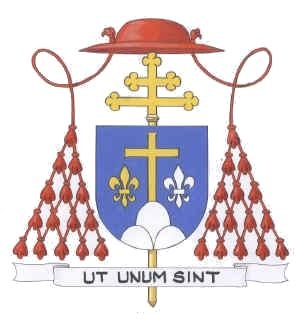 Cardinal Ouellet’s Coat of Arms
Cardinal Ouellet’s Coat of ArmsA somewhat reserved and humble man, Cardinal Ouellet continues to do numerous tasks assigned to him by the Holy Father, such as introducing to the public the pope’s post-synodal apostolic exhortation Verbum Domini (2010), which came from the 2008 Synod on the Word of God for which Ouellet served as “Relator.”
This part of Sulpician history—the story of our five cardinals—contains two interrelated truths. On the one hand, it has been a challenge for such a small community of priests to lose some of its most capable leaders to duties apart from the community. So it is a sacrifice. On the other hand, it is a gift the Society freely gives in service to the universal Church. Sometimes such sacrifices are necessary for the good of the larger community. These five priests have served the Church faithfully and, in doing so, have brought honor to the Society of the Priests of Saint Sulpice. Thus, the Society gives thanks for God for their ministry and lauds the selfless achievement of these “princes of the church.”



